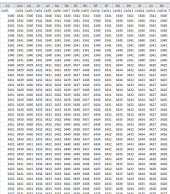MurphyGuy
It just needs a bigger hammer
- Joined
- May 20, 2020
- Messages
- 4,129
Can you log into your BMS interface and post a screen shot of you cell voltages on one of your 5.4kW packs? I don't need every pack, just pick one at random.This might irritate you but when I turned the Sol-Arks back on to get the batteries back to 100% I noted a 5% drop in SOC (until hubby gets back that's all I have). If that SOC was correct (beginning and ending) that would mean I dropped around 2.7 kwh in about 23 hours. I too look forward to confirming these numbers.
You are basing you 5% calculations on the assumption that each of your packs is 5.4kWh in capacity and that may not be accurate. While the pack might have that much capacity, full capacity and usable capacity are usually 10% to 20% different. Charging a large battery pack up to full voltage and draining it to empty is harmful to the battery's life expectancy, and while it can be done, most manufacturers set BMS limits to chop off a little at the top and a little at the bottom. I can see the voltage specs using the Fortress Power spec sheet, but nothing on their website indicates if your packs are 15s or 16s configs.
For now, lets assume 16s config and use your numbers from your 5% SOC drop. Assuming your 10 packs are 5.4kwh each, that's 54000 watts.. x 0.05 = 2700watts-hours of capacity loss (2.7kWh). So 2700 divided by 24 hours = 112.5 watts per hour, or a bit over 10 watts per pack.. Assuming the BMS is doing some balancing, that's more reasonable to expect.
Yes.. those numbers are generally accurate no matter what inverter is being used.Would you say the figure showing harvested PV is likely accurate on a Sol-Ark?
It kind of depends. I'm not sure who's reporting SOC information in your case but I suspect your Sol Arks have nothing to do with it other than acting like a user interface for the battery BMS's. In other words, the batteries are reporting SOC and the Sol Arks are just displaying the information for you. (not entirely sure on that one). It is possible that the inverters are attempting to report their own calculated SOC based on your input parameters but I suspect that isn't the case.Until our conversation, I thought all of the Sol-Ark reported data was accurate. I'm pretty sad that it's not. I'm beginning to dislike my choice in inverter as well.





